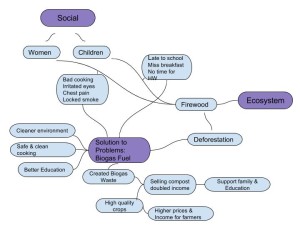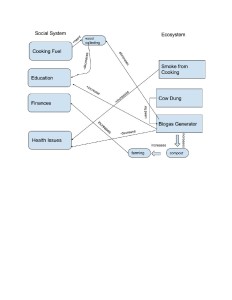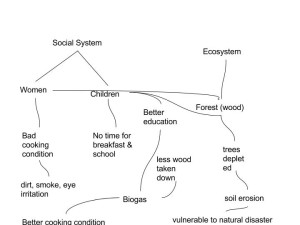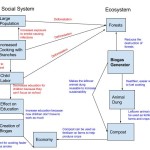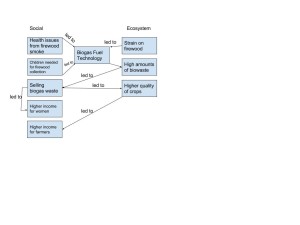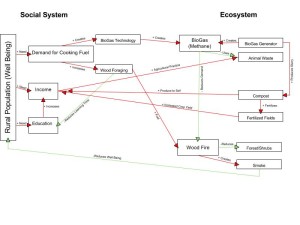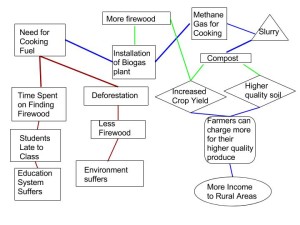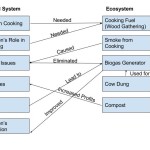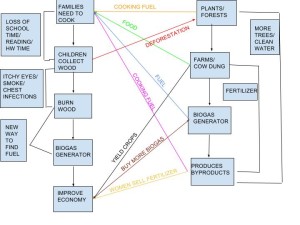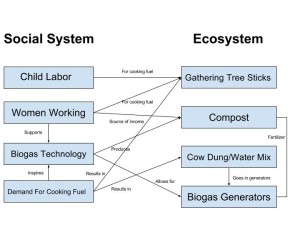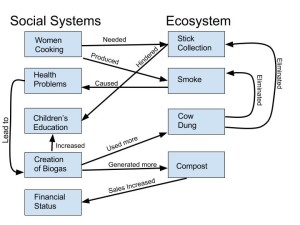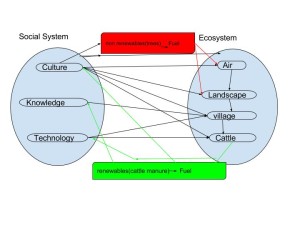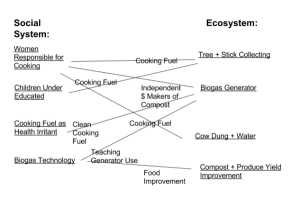In my diagram I focus on how people use India’s resources to find a solution to the harmful problem of cooking on stoves. This relates to the concept in module 2, human-environment landscape, which displays how humans affect the environment and the environment affects humans. In this case the environment is negatively affecting society, more specifically, women and children. My diagram displays that women order their children to collect firewood which inevitably leads to children missing breakfast, being late to school, and not having enough time to do their homework, while also creating unsafe and unsanitary cooking conditions in the house. People suffer from irritated eyes and chest pains from the locked smoke in the house. To fix this danger the environment caused, experts decided to create Biogas Fuel Technology. This technology creates safer and cleaner cooking conditions, a cleaner environment, and allows kids to have time for their education. Additionally, this fuel creates waste that women use to sell to farmers to help support their family and education, doubling their income. This allows farmers to improve their crops and earn a greater profit. This is an example of human-environment landscape because society altered their environment to create a safer living.
When comparing my diagram to Figure 1.5 there are a few similarities and differences. Even though Figure 1.5 displays a broader version than my diagram, both figures display how the social system affects the ecosystem and how the ecosystem affects the social system. However, Marten’s diagram focuses more on the population social ranking. For example the Marten explains the generators will mainly go to the wealthy rather than the poor, creating a wider gap between the two groups, which will not totally prevent the current problem of deforestation. On the other hand, my diagram focuses on how society as a whole is improving. Analyzing Figure 1.5 allowed me to have a different perspective on this concept, from seeing a different thought-process. I think that both my diagram and Marten’s diagram are correct, however, they differ due to different interpretations of the video.

